- Published on ·
- Reading time 14 min read
South Island Tour Part 1: Dunedin
The Wildlife Capital of New Zealand
Share this page
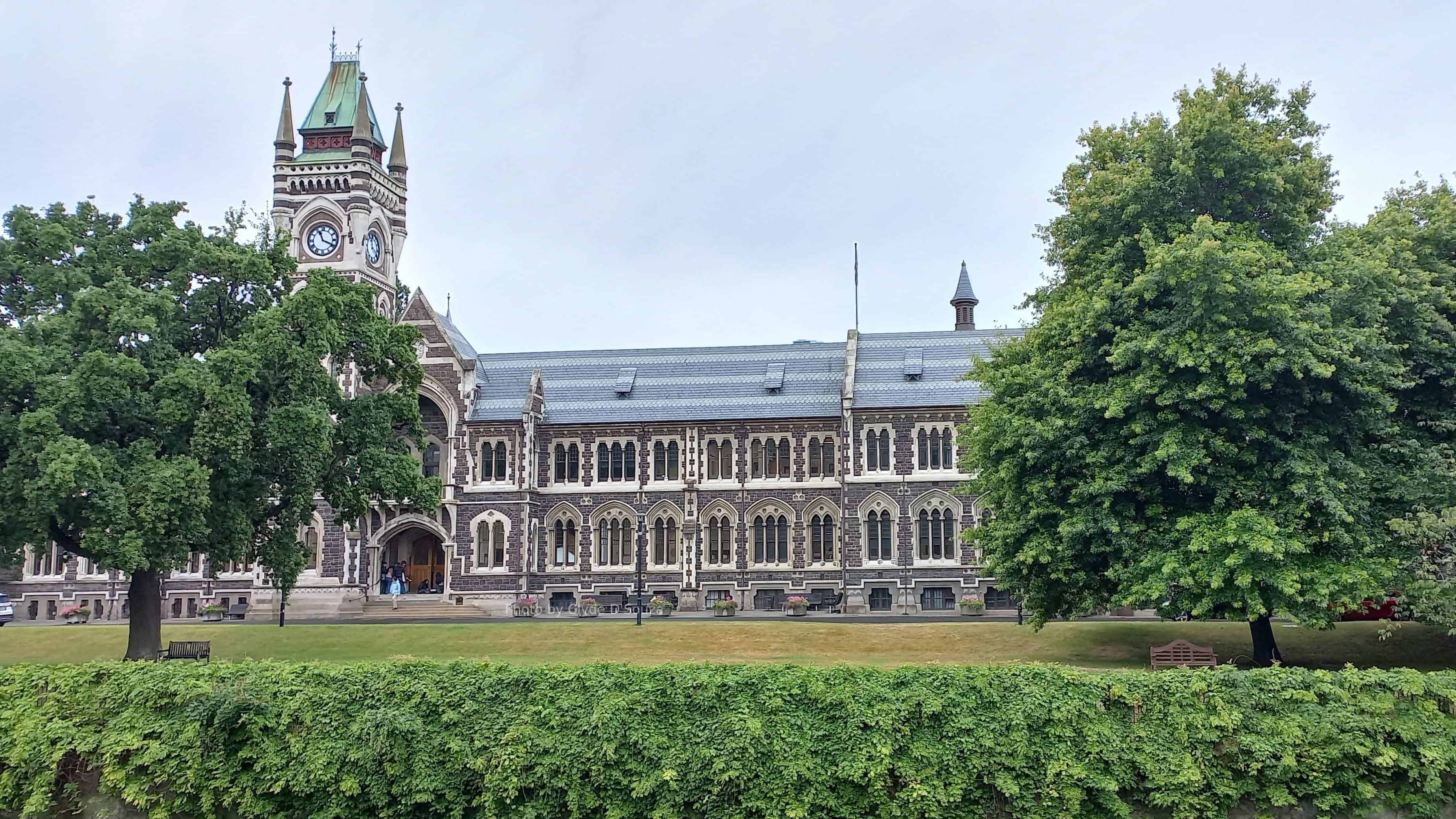
Introduction
I travelled with my parents across the South Island, New Zealand. After spreadsheets of research and budgeting, I prepared an 11-day, jam-packed itinerary. The high-level itinerary looks something like this:
- Day 1: Fly to Dunedin from Auckland.
- Day 2: Taieri Gorge and Dunedin city sightseeing.
- Day 3: Dunedin city sightseeing.
- Day 4: Bus from Dunedin to Queenstown.
- Day 5: Queenstown city sightseeing.
- Day 6: Arrowtown, Cardrona and Wanaka day tour.
- Day 7: Milford Sound day tour.
- Day 8: Glenorchy day tour and Queenstown city sightseeing.
- Day 9: Bus from Queenstown to Christchurch.
- Day 10: Christchurch city sightseeing.
- Day 11: Fly back to Auckland from Christchurch.
In this article, I'll cover the days in Dunedin, and in future articles, I'll cover Queenstown and Christchurch. Ready to begin the journey? Let's go!
Travelling to Dunedin
We travelled on a Jetstar flight from Auckland. Because this is a budget airline, we saved a lot on tickets, especially when you compare the fares with Air New Zealand. You should watch out for the bag size restrictions, as they're pretty strict on the size and weight of the bags you carry, although on that day they weren't too strict about it.
Tip: Use Webjet to compare flight prices and more.
If you're in Auckland and not driving to the airport yourself, you have the option to either get an Uber, get the Supershuttle, or catch the SkyDrive bus to the airport. When we compared the costs for each option, getting the Supershuttle worked out the most economically.
On the day we were travelling, surprisingly, the flight departed on schedule and arrived in Dunedin a few minutes before time. As you arrive in Dunedin, the landscape you'll see is farms and lush green landscapes.
The Dunedin airport is located about 30 km from the main city centre so it's a bit of a travel. Even at Dunedin, we decided to get the Supershuttle from the airport to our Airbnb accommodation.
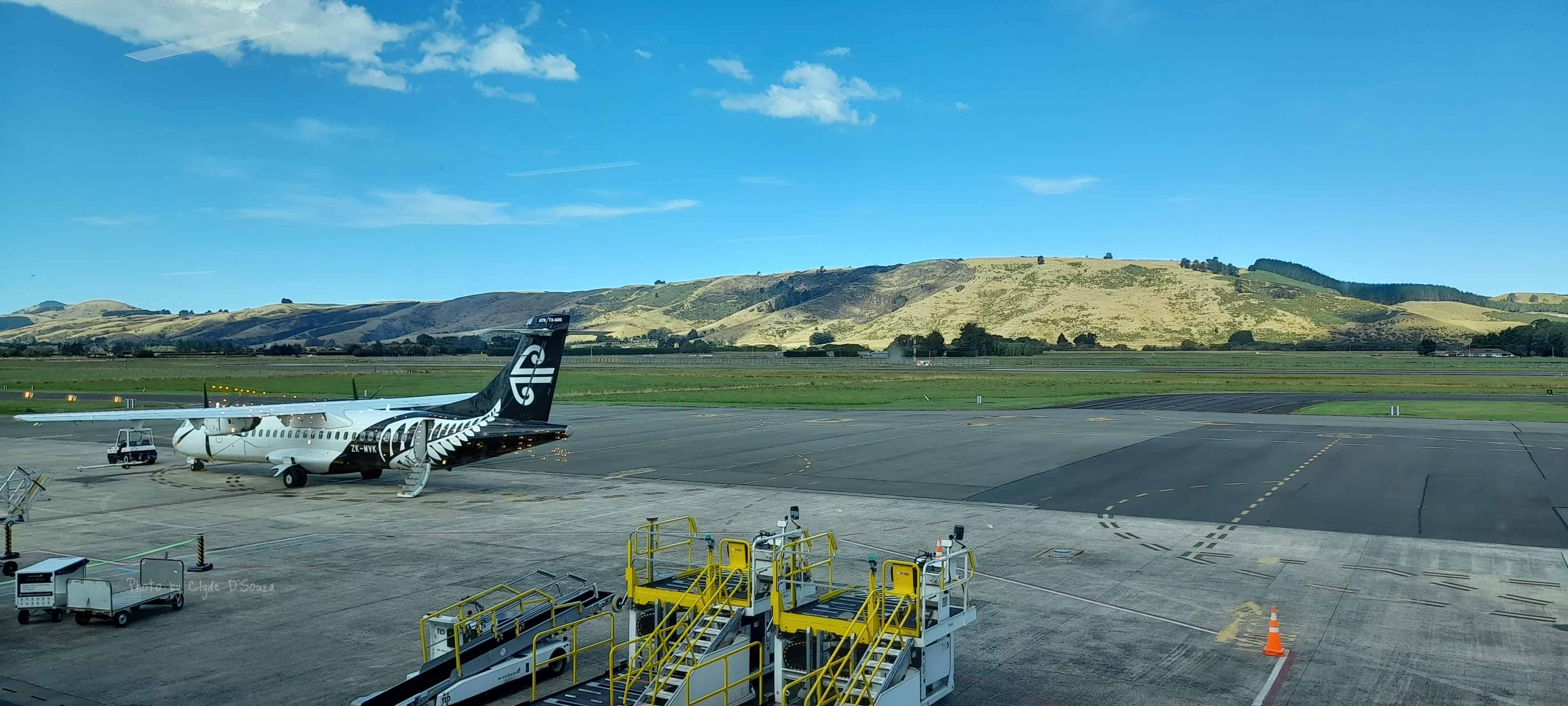
Photo courtesy of Clyde D'Souza
Day 1
The Inlander train
We start our Dunedin exploration by going to the Dunedin railway station comfortably before time to explore the station as well as check in to the Inlander train. This train service is run by the Dunedin Railways, and there are a few options. The Inlander is the only one that runs through the Taieri Gorge all the way up to Hindon and then returns to Dunedin. Fortunately, accompanying the fascinating views was some insightful commentary about the Otago gold rush, how this railway line was built, and the surroundings we were seeing, all with some humour sprinkled along the way in the right places.
There's a cafe onboard but the queues can result in a long waiting time to grab lunch. I'd recommend packing your own lunch and taking it along with you. This way you could grab a bite outdoors and enjoy the spectacular views in Hindon.
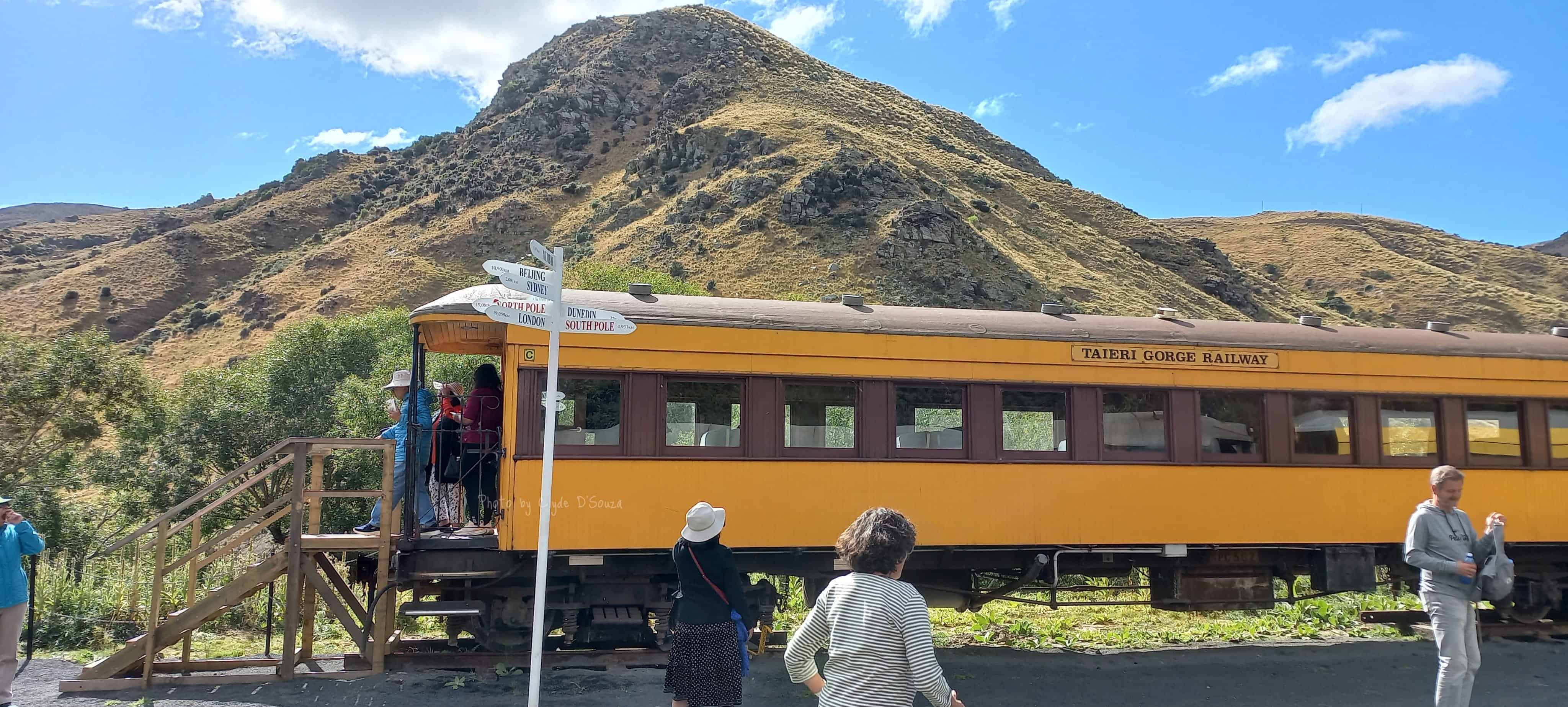
Photo courtesy of Clyde D'Souza
Each ticket costs NZD 69. I'd recommend this if you're a fan of train journeys and especially looking to experience this landscape. Be mindful that this journey pretty much takes half a day's worth of your time!
Post the train journey, we quickly admired the train station building and the Otago Art Society, which is located on level 1 in the same building. Don't miss the stained-glass painting upstairs!
First Church of Otago
Located in the heart of the city, this Presbyterian church was majestic with a gothic style architecture. The bell tower stood tall and the exteriors looked amazing and have weathered well. Unfortunately, the doors were closed when we went there so we couldn't admire the interiors but the photos on their website look amazing.
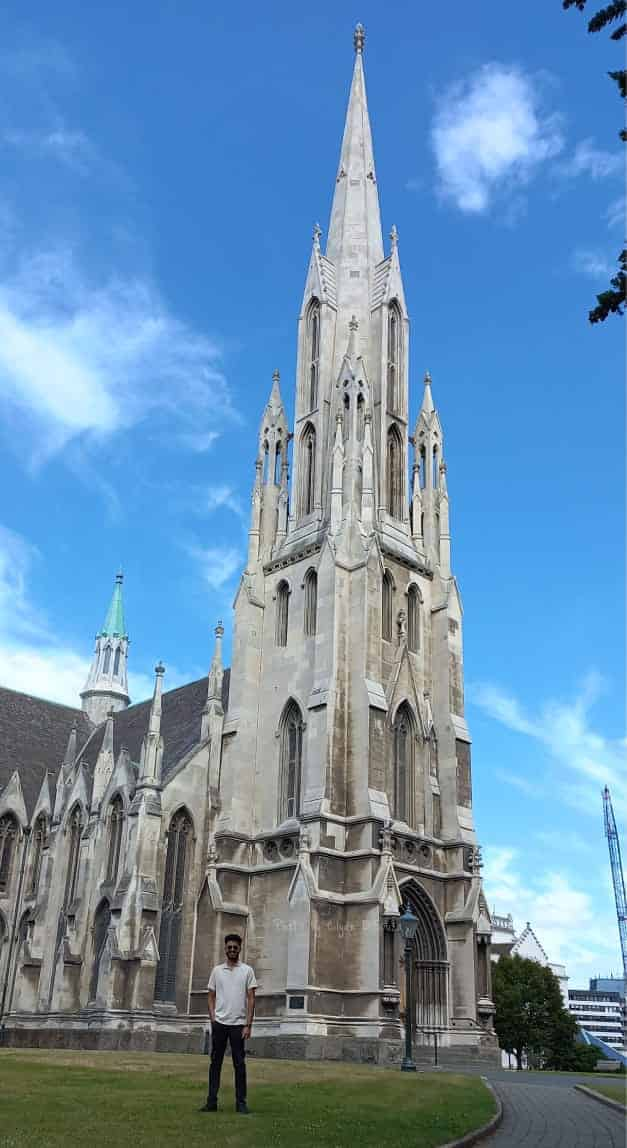
Photo courtesy of Clyde D'Souza
Toitū Otago Settlers Museum
As per their website, the Toitū Otago Settlers Museum is a museum of social history dedicated to telling the story of the people of Dunedin and the surrounding area, whose character, culture, technology, art, fashion and transport shaped New Zealand's first great city. The museum building looks sleek and is very spacious on the inside. The collections inside are fascinating, and it's very easy to spend hours reading all about them.
Admission is free, and there's a donation box inside if you'd like to drop some cash in.
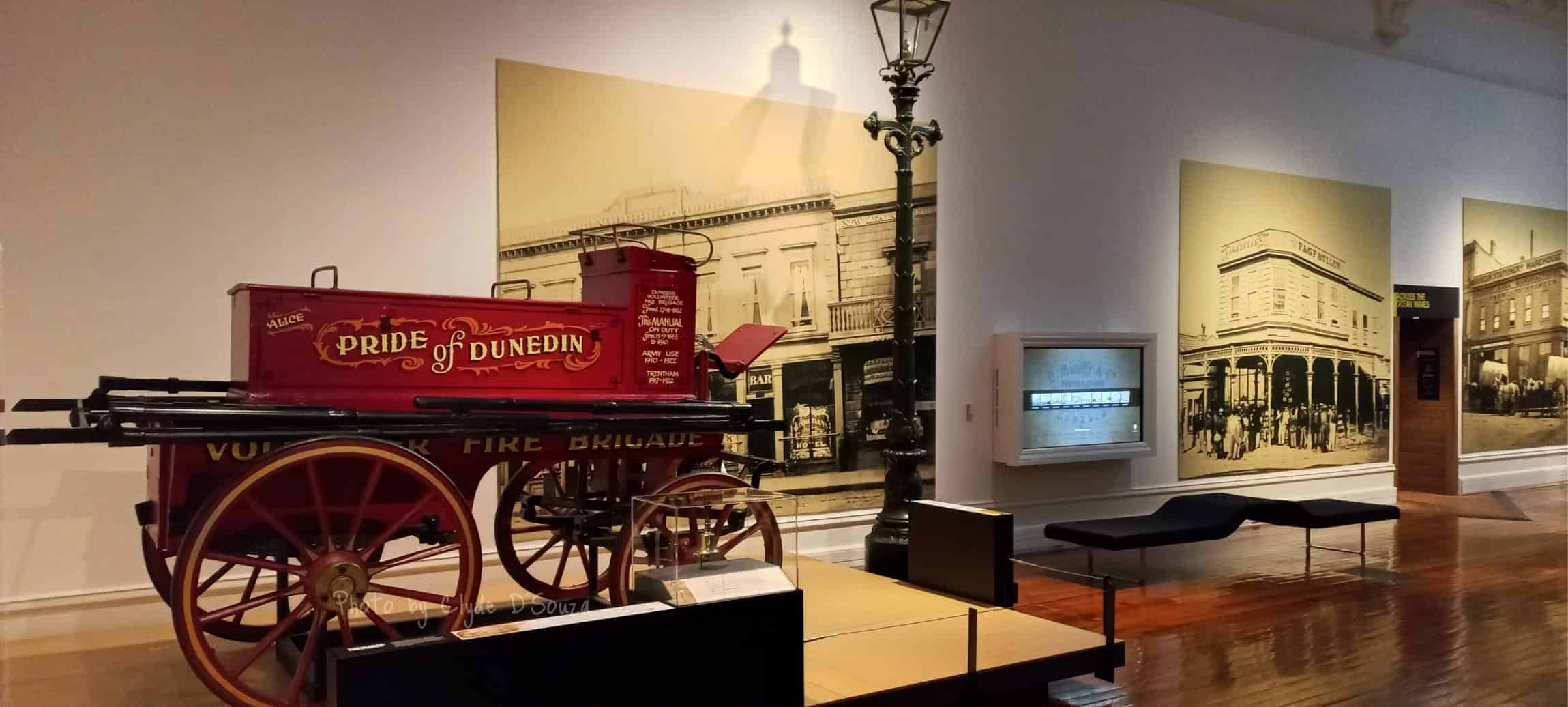
Photo courtesy of Clyde D'Souza
Lan Yuan, Dunedin Chinese Garden
Adjacent to the Toitū Otago Settlers Museum is the Dunedin Chinese Garden which transports you into tranquility. This miniature garden was made using authentic materials, was pre-fabricated and assembled in Shanghai on a site identical in size and shape to that in Dunedin, and then dismantled and transported here where it was reconstructed by artisans and supervisors from Shanghai.

Photo courtesy of Clyde D'Souza
Admission is NZD 30 per person and includes a complimentary audio tour. There is no time limit, so my recommendation would be to spend some quality time here for more zen moments.
Baldwin street
Up until now, we had been doing pretty well for time, so we decided to switch up the plans and cover some areas that were a bit further away and were originally scheduled for day 2 of our Dunedin trip.
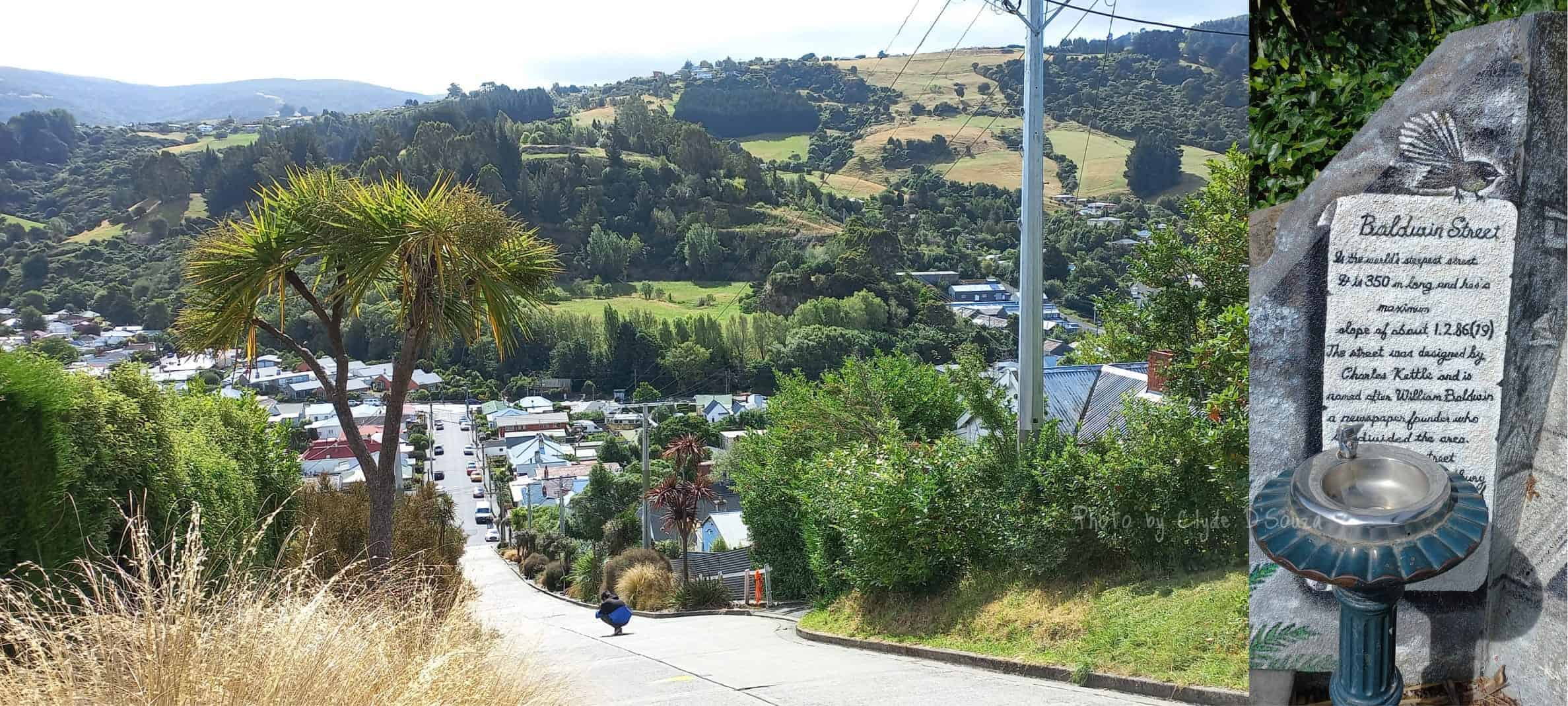
Photo courtesy of Clyde D'Souza
Recognised for being the world's steepest residential street, Baldwin street in Dunedin is a popular tourist spot. People come to visit this residential street and either walk up or even drive up to get a feel of the steep incline. If you're into your hikes and have decent fitness, then walking up this street shouldn't be a problem (although please do gauge accordingly before pushing yourself up for this).
In my honest opinion, if you're running short of time, this spot can be skipped, and you wouldn't miss much.
Botanic Garden
From Baldwin Street, we headed to the Dunedin Botanic Garden for an evening stroll. The walking track in the garden is split into two sections: the upper garden and the lower garden. Depending on how much time you have on hand, you could do both or just one. The upper garden has decent seating and better views. The website has a map of the garden with all this information, as well as information on what's located in different sections of the garden. We just stuck with the lower garden and spent our time wandering around that area, and even that was well spread out.
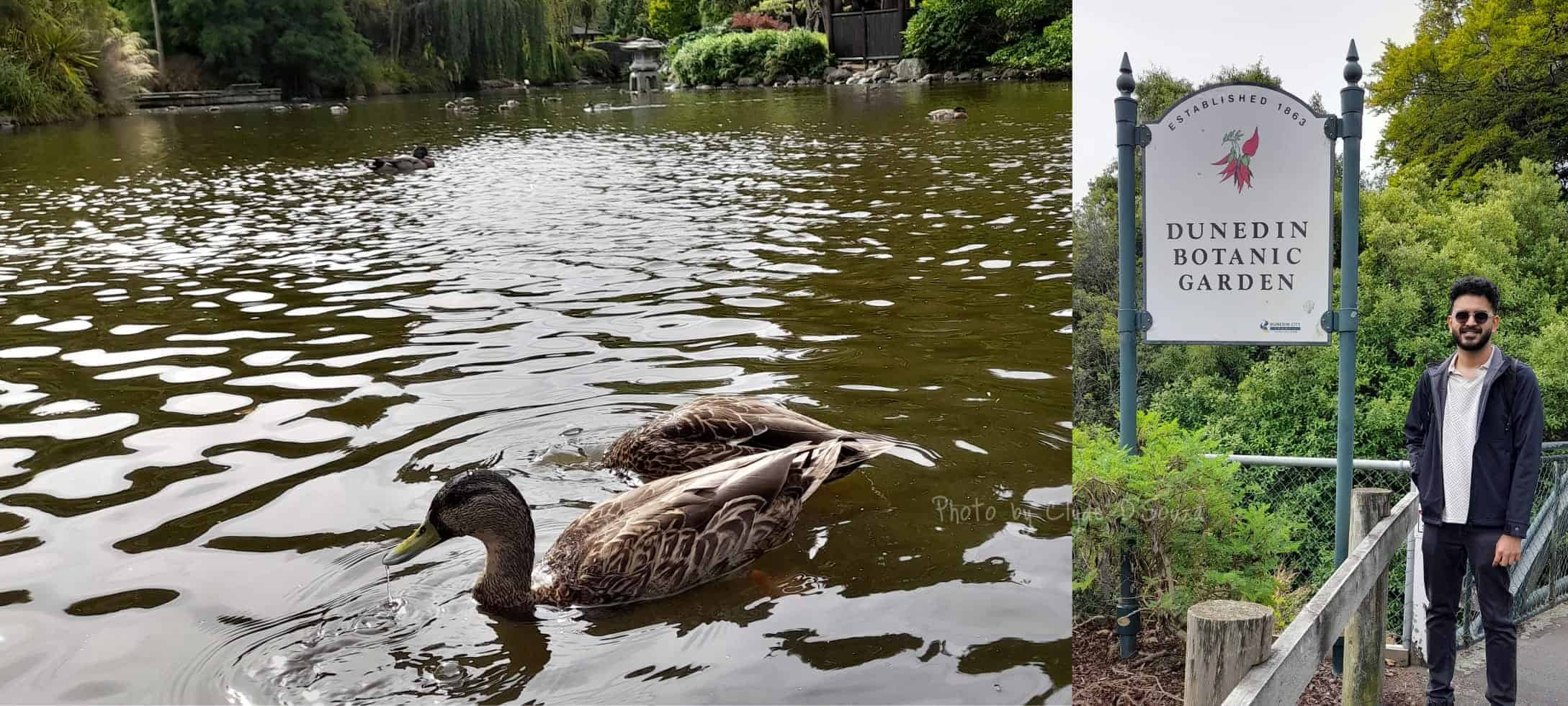
Photo courtesy of Clyde D'Souza
There is no admission fee to enter the garden. I'd recommend spending quality time here, either having a little picnic in the park or walking around the gardens. I only wish that the cafes situated inside the garden were open till late.
Tip: Orbus is an option for public transport, but the service is not as frequent as you'd expect. They have a transit mobile app.
Day 2
University of Otago and the Geology Museum
We started our day by visiting the Gothic complex of university buildings that were built between 1878 and the 1920s, which includes the clock tower is part of. The university buildings are impressive and large-scale. This campus is definitely worth visiting to admire the architecture. Do walk across the Water of Leith to get a panoramic view of the clock tower building. A must-do if you're in Dunedin!
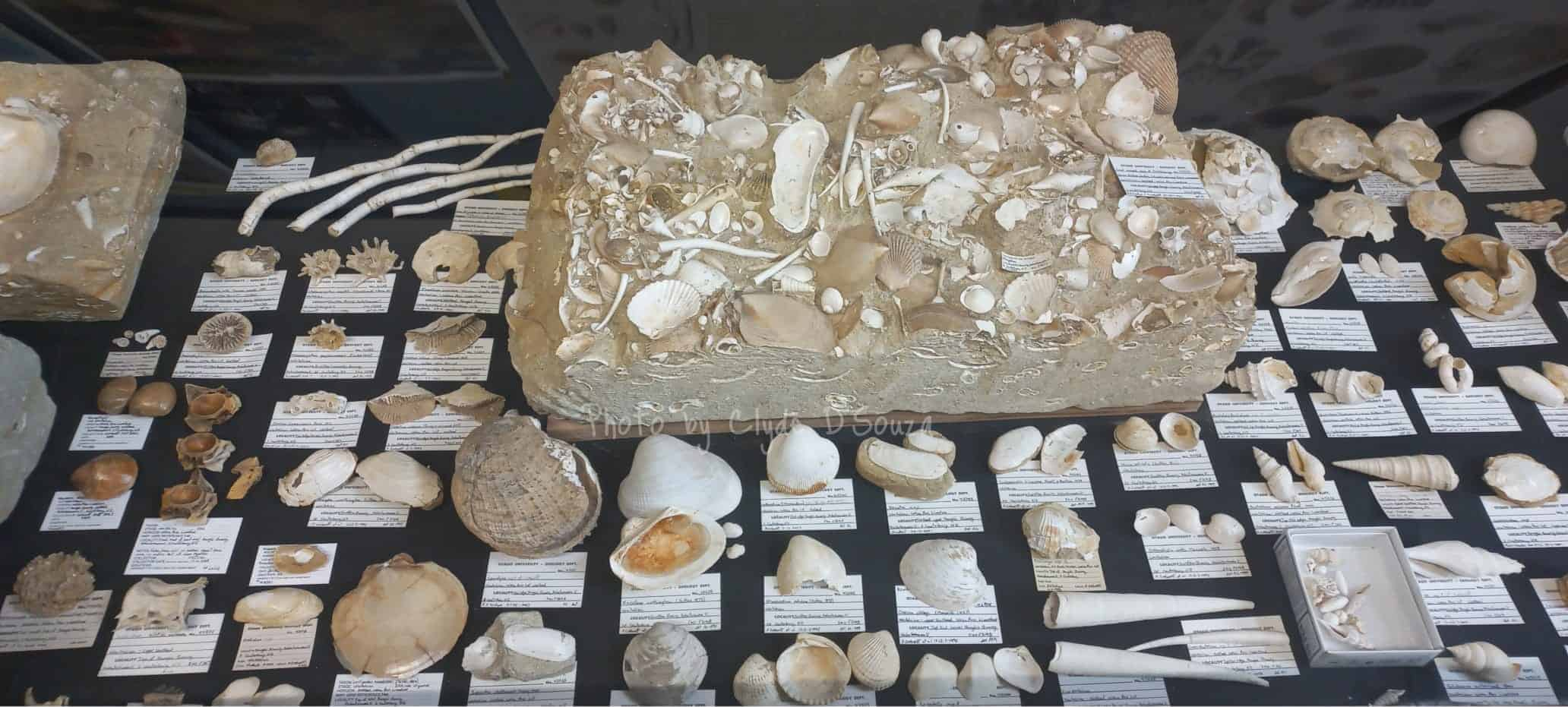
Photo courtesy of Clyde D'Souza
The geology museum is actually a department of the university that's just open to the public. Contrary to the reviews online, I didn't think it was impressive.
Clyde Street was a short walk from the university business school, so I had to visit it and take a picture below the street sign!
Tūhura Otago Museum
A short walk from the university is the Otago Museum. This is a must-visit! I didn't expect this place to have such breadth and depth of collections, but boy, was I wrong! I think there's something for everyone in here, and even the general vibe of this place was vivacious.
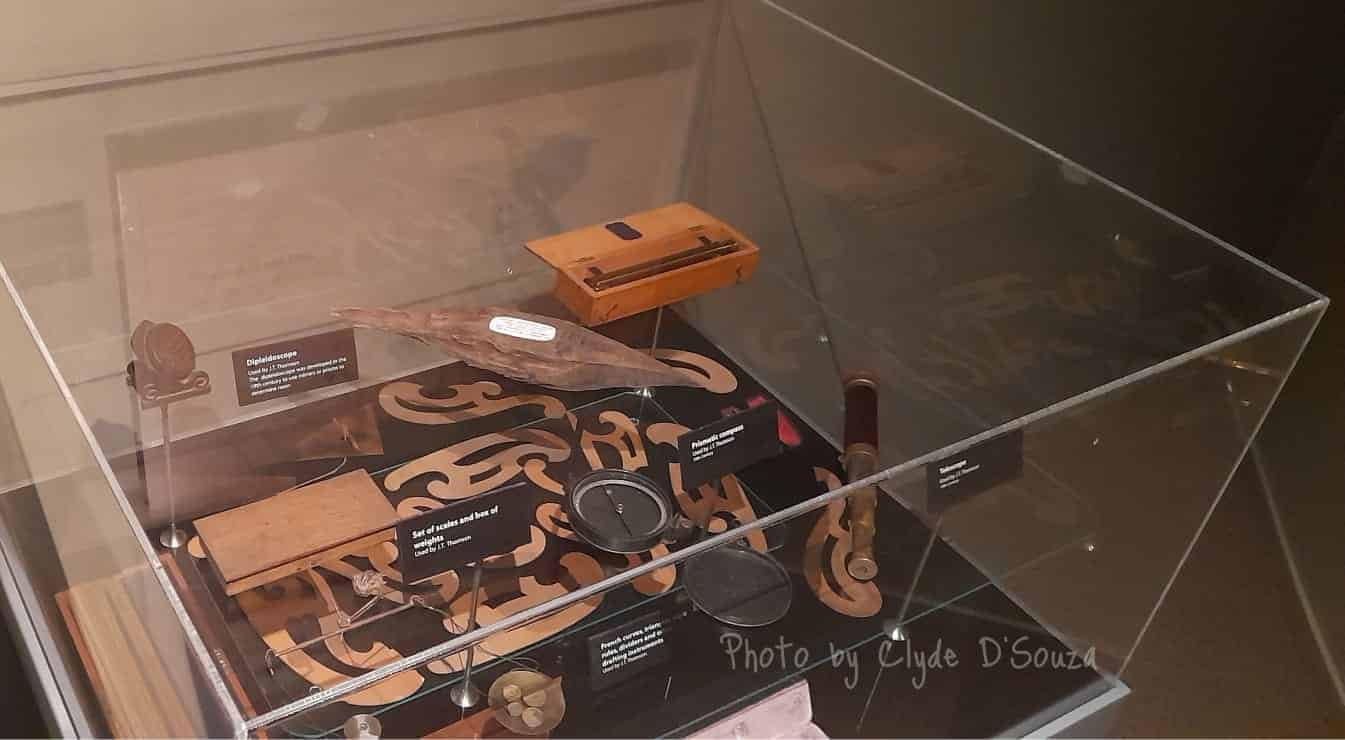
Photo courtesy of Clyde D'Souza
General admission is free but a donation box is placed inside where you can drop some cash in. For special events, one might need to purchase tickets. Again, I can't recommend this place enough, so do save a decent chunk of time to wander around in this museum.
St. Paul's Cathedral
We then walked towards St. Paul's Cathedral, which is located near the Octagon area in Dunedin CBD. This Anglican cathedral church was one of the best churches we visited in the entire trip. The neo-Gothic architecture, stained-glass windows, and incredibly detailed work on the interiors just amaze almost everyone who enters it.
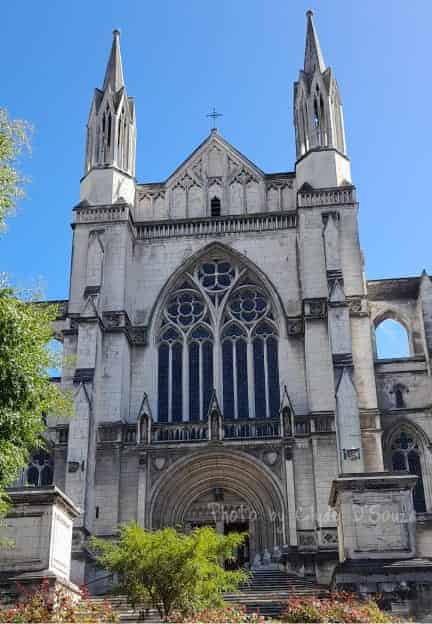
Photo courtesy of Clyde D'Souza
Cargill's Monument
After a pit stop for lunch at India Gate restaurant, we walked to Cargill's Monument located on Rattray Street. This Gothic revival masterpiece was built in memory of Captain William Cargill, who, along with the Reverend Thomas Burns, was the leader of the Otago settlement.
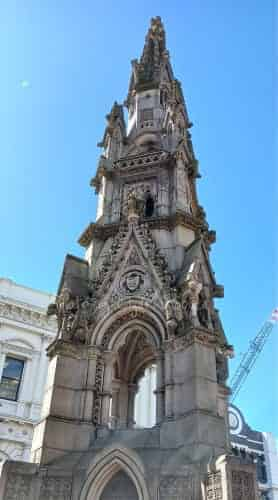
Photo courtesy of Clyde D'Souza
St Joseph's Cathedral
From Cargill's Monument, we walked up Rattray Street past the Speight's Brewery to St Joseph's Cathedral. For anyone deciding to walk up this street, I must warn you that it's uphill and requires a bit of effort.
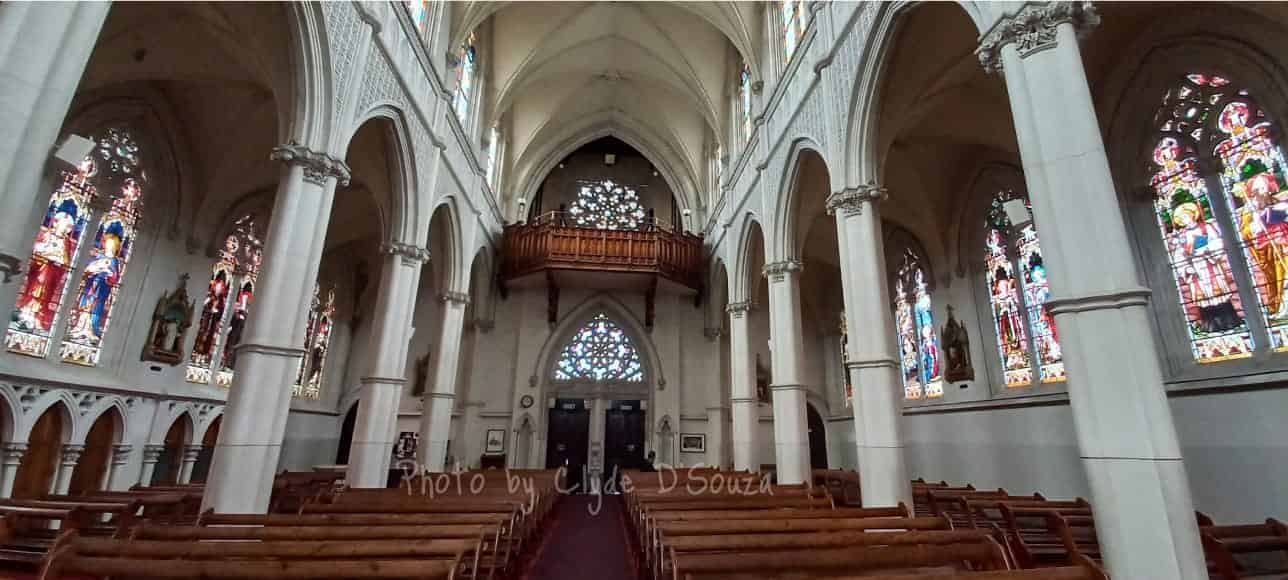
Photo courtesy of Clyde D'Souza
Compared to St. Paul's Cathedral, this Gothic revival cathedral was relatively smaller but had intricate architecture. The original design for this cathedral had a tall spire with a height of 100 meters over the transept, which was never completed.
The Octagon
We then walked to the city centre of Dunedin, The Octagon, an eight-sided plaza, where we sat and ate snacks. From the Octagon Reserve, we get a good view of the Robert Burns Statue, the Dunedin Town Hall and the St. Paul's Cathedral in a single frame.
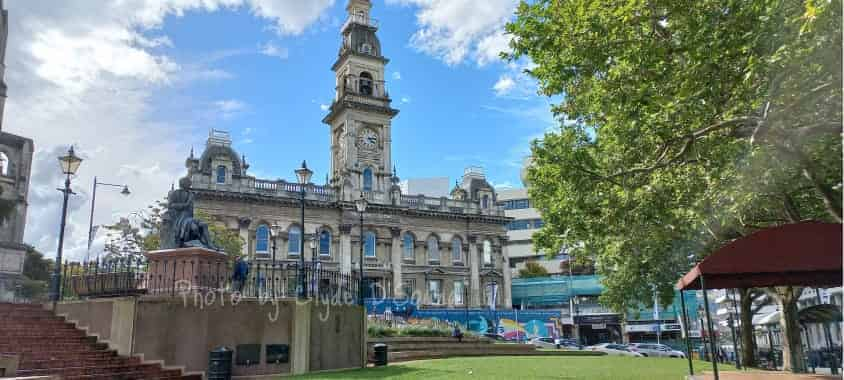
Photo courtesy of Clyde D'Souza
Dunedin Public Art Gallery
Tucked away in The Octagon is the Dunedin Public Art Gallery. This doesn't look impressive from the outside, but is quite large and impressive from the inside. There aren't too many exhibits, so I don't suspect you'd need a lot of time to wander around. Admission is free, but cash donations are accepted.
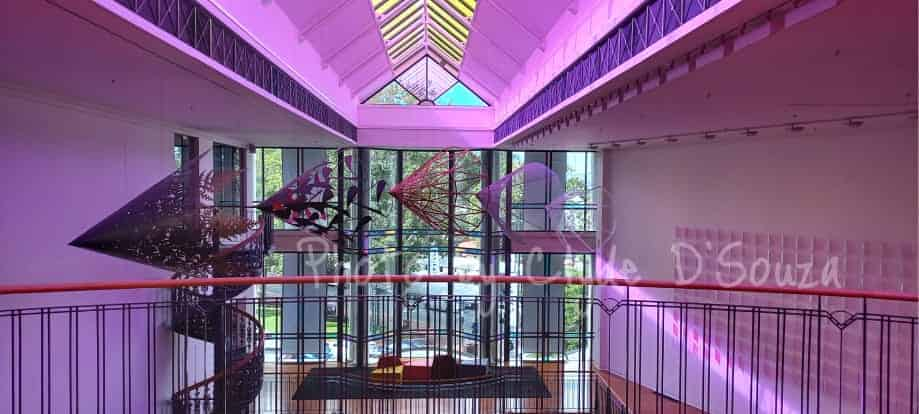
Photo courtesy of Clyde D'Souza
Dunedin Railway Station
We wandered back towards the Dunedin Railway Station to admire the building while it wasn't crowded. Along the way, you'd pass the Otago Daily Times building and the Dunedin High and District Court. Just like the University of Otago, the Dunedin Railway Station building can be admired from across the street to get a good panoramic view. If you head inside during off-peak hours, you might find a couple of carriages parked up so tourists can take some photos. Just outside is a JA 1274 Steam Train in a glass box, which you can go inside, but I guess since we were there much later in the afternoon, there was no one.
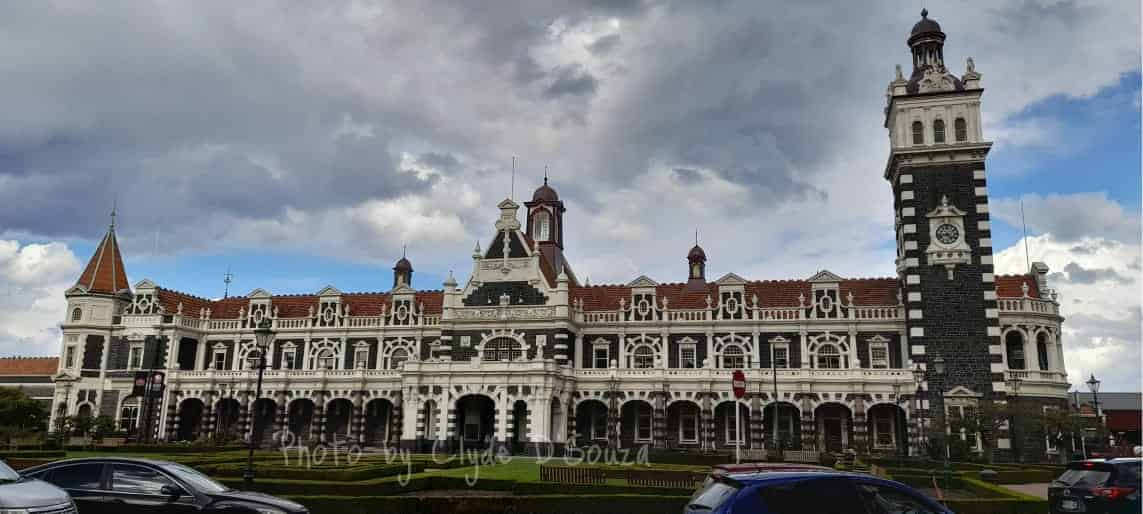
Photo courtesy of Clyde D'Souza
Queens Garden and Imperial Building
We ended day 2 with a pleasant stroll around the Queen's Garden, located not too far away from the railway station, which hosts an impressive war memorial. Right opposite the Queen's Garden is the Imperial Building, also known as Imperial Chambers, which is an example of Queen Anne Revival architecture and is a beautiful structure to admire.
Day 3
Meridian Shopping Mall
After checking out of our Airbnb accommodation, we headed to the Meridian Mall for coffee, shopping and some lunch. Our bus to Queenstown was only at 2:30 pm, so we had a decent amount of time on our hands to spend, and a shopping mall is the perfect place for that.
Olveston Historic Home and the King Edward VII Penfold Post Box
The weather on day 3 got rough with cold winds piercing through. Instead of spending all of the time in the mall, I decided to be a bit ambitious and walk to the Olveston Historic Home. They usually do guided tours, and you'd need to make a booking for this, but you are free to wander in the garden area and also admire the vintage Fiat car on display. Just outside the historic home is the King Edward VII Penfold Post Box, which is just a simple red post box.
What else can you do in Dunedin?
As you'd expect, it's not possible to cover everything that Dunedin has to offer. Here are a few other places you might want to consider adding to your itinerary if you have the time.
Larnach Castle
Visit New Zealand's only castle, Larnach Castle, built by William Larnach, located in the Otago Peninsula about 14 kilometres from the Dunedin city centre. Self-guided tours cost NZD 45 and guided tours cost NZD 175 per person, which requires advance booking.
Royal Albatross Centre
Located about 30 kilometres from the city centre is the Royal Albatross Centre. A classic Albatross tour will cost around NZD 54 per person to view the albatross and any other wildlife.
Port Chalmers
Port Chalmers offers a great vantage point to see the harbour and the workings of the port. It's about 15 kilometres northeast of Dunedin's city centre, Port Chalmers is also a small town that has cute cafes and galleries where one can wander around.
St Kilda
St Kilda and St Clair beach is a popular spot for swimming and surfing, and isn't too far from the city centre. Cafes and bars line the esplanade and offer a breathtaking view of the Southern Ocean. For those interested, there's also an open-air hot saltwater pool.
Street art tours
Dunedin streets are also popular because of their street art. Depending on how much time you have to spare, you can either do a short inner-city tour that would take you about 1–1.5 hours, or a long inner-city tour that would take you anywhere between 2–2.5 hours wandering around the streets and admiring them.
Speights Brewery tour
If you like the taste of a cold beer and want to know how it's made, join a brewery tour while you're in Dunedin. Speights Brewery tour offers a tour for NZD 35 per person.
Ghost walking tours
Have an appetite for historical tours in the form of ghost tours? I was quite surprised to find out that ghost walking tours are quite popular in Dunedin.
Parting Dunedin
If you're looking for transport options between various cities and townships across New Zealand, you'll want to check out Intercity. We hopped on one such service to Queenstown that followed this route: Dunedin CBD → Mosgiel → Milton → Lawrence (Night ‘n Day store) → Beaumont → Roxburg → Alexendra → Clyde (yes, Clyde!) (P.S. Clyde Dam is New Zealand's third-largest hydroelectric dam) → Cromwell → Kawarau Gorge suspension bridge → Arrow junction → Frankton → Queenstown.
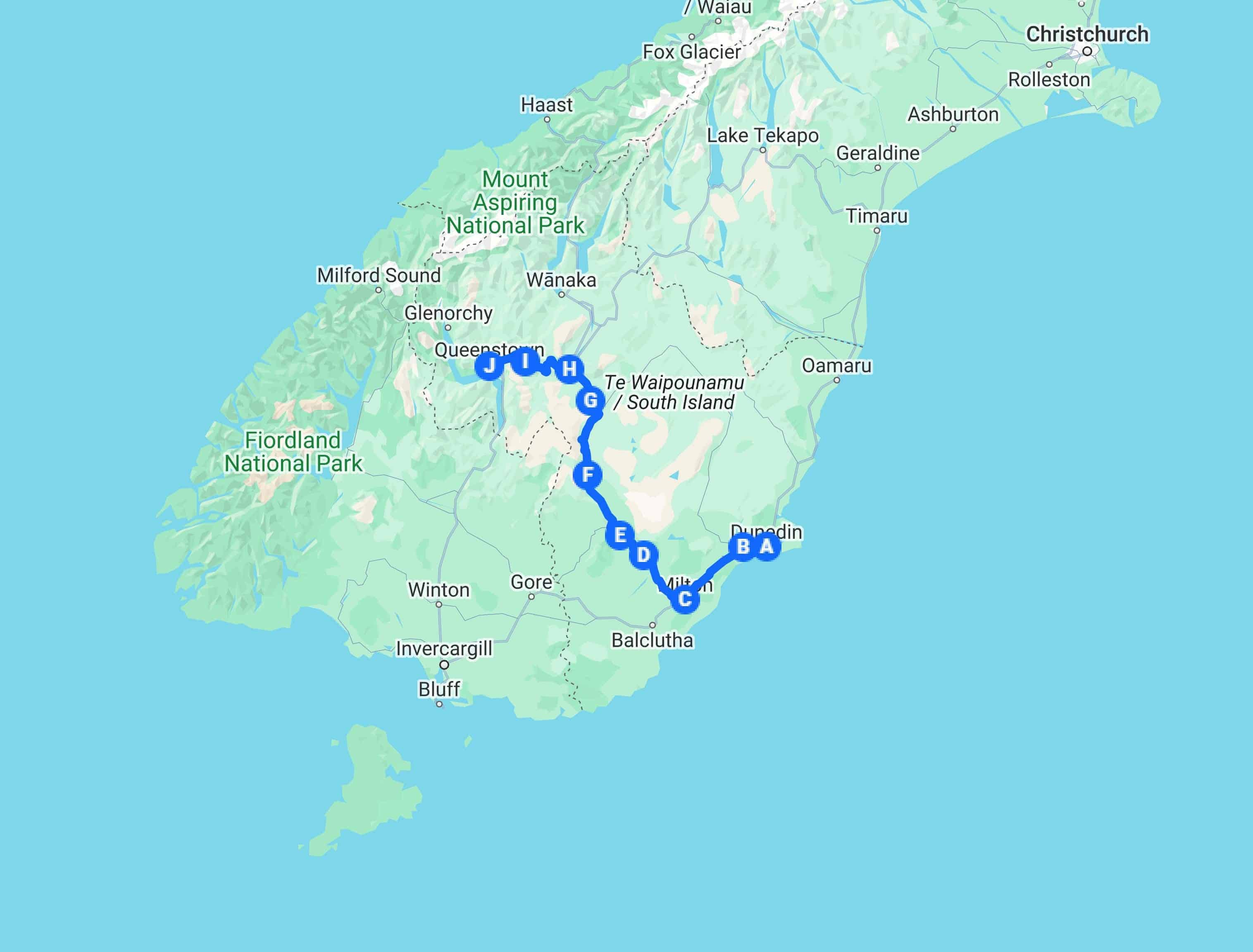
The Intercity bus route from Dunedin to Queenstown: Dunedin → Mosgiel → Milton → Lawrence (night and day stop) → Beaumont → Roxburg → Alexendra → Clyde (yes, Clyde!) (P.S. Clyde Dam New Zealand's third-largest hydroelectric dam) → Cromwell → Kawarau Gorge suspension bridge → Arrow junction → Frankton → Queenstown
In the next article, we'll have a look at what we got up to in Queenstown — the adventure capital of New Zealand — so stay tuned!
That's it! Thanks for reading.